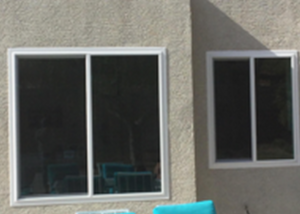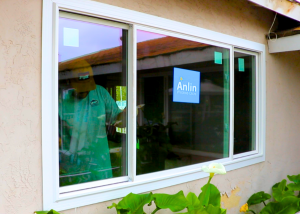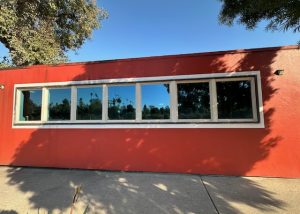FAQ
A: Replacement grade windows in general are typically higher quality windows than new construction (or contractor) windows. The primary reason this is so is because new home builders and contractors are always looking for the cheapest products they can buy to maximize the return on their project and they typically only offer the minimum warranty by law which is 2 years.
Most window companies offering replacement windows offer a warranty of 15 years or more because their windows are better designed, built and installed. At Windowfits we install windows that carry a lifetime manufacturer’s warranty.
A:
- You are seeing an abnormal rise in your energy bills and you have metal frame windows.
- Wooden frames that constantly require maintenance and have a high level of expansion and contraction with moisture.
- Windows that don’t slide up and down anymore.
- Broken or cracked glass.
- Condensation between the panes of glass, a sure sign of glass seal failure.
- Old or inefficient glass.
- Air leaking into your home in and around your window, signs of aging or poor installation.
If any of the above problems exist with your current windows, replacement windows could be a wise investment that reward you with lower energy bills and a better looking home for years to come. Contact Windowfits today at 951-677-2593.
A: Technically both! Most Replacement windows are installed from the exterior in, however they are secured from the inside of the home with screws going directly into the studs of the home. They also require trim work and caulking on the interior to finish them of for a seamless transition into your drywall return.
A: Yes. Homeowners lose roughly 30% of the money they spend to heat and cool their homes when energy (warm air in winter, cooled air in summer) “escapes” through inefficient windows.
Older style window frames and non-insulated glass allow thermal energy to easily pass between the inside and outside of your home.
Today’s replacement windows feature insulated frames and glass packages that create a thermal barrier to prevent energy loss. This means you’ll use less energy to heat and cool your home and ultimately see significantly lower energy bills.
A: That depends on the quality of the windows along with the quality of the installation. If you go with a high-quality window installed by professionals you will likely not have to replace your windows for the duration of your time living in the house. A true quality window made today is engineered to last a minimum 30 years. The products, testing, and engineering used today in the higher quality replacement window designs all are very complicated and thorough allowing for this time of long term performance.
A: Windows need more than one pane of glass to keep more heat inside the home in winter and cool air in summer. Multiple panes provide a thermal barrier that prevents energy leakage.
A: Most replacement window projects can be completed within 1-2 days. The type of window being installed and type being removed help determine the amount of time needed to complete the job. On average each window takes about 45 minutes. Trim work and cleanup will require additional time to complete. The windows are custom fitted to your home they have to be manufactured. Special order windows take approximately 2-3 weeks to be manufactured and shipped.
A: Replacing a vinyl window costs on average between $300-$700 per window.
A: No, modern replacement windows have many glass options such as tempered glass, Low-E glass, Argon gas, Krypton gas, and heat mirror. Each option offers various levels of energy efficiency and safety.
A: There are many advantages and disadvantages when it comes to the various window frame materials. When choosing a material for your window frames you should always look for the best combination of strength, durability, insulating properties, ease of maintenance, and attractiveness.
A: For most high-quality, energy-efficient windows this statement is true. Savings will vary no doubt, but expertly engineered and well-built windows will lower your home’s energy consumption, resulting in significant monthly savings on your energy bills.
With vinyl replacement windows, maintenance is also virtually eliminated. No need to scrape and paint windows. These energy and maintenance savings will allow you to recoup your window investment over time.
A: If your ultimate goal is to realize maximum energy savings then yes you should replace all of your old windows at the same time. However it is not essential. Replacing even a few windows at a time will help to reduce energy use and lower your heating and cooling bills.
If you’d prefer not to replace all of your windows at the same time, we advise either replacing all of the windows on one side of the home at a time or one level at a time for a multi-level home.
A: Proper installation is essential for today’s replacement windows to be fully effective. That’s why our replacement windows include professional installation by factory-trained crews. We want to make sure the fit is perfect and your new replacement windows will be properly balanced for optimum performance.
A: Inert gas such as argon serves as a highly effective barrier to prevent the transfer of thermal energy through conduction. You can tell how effective it is by placing your hand on the inside of the glass on a cold day, only to find it is barely cool to the touch! But you should also be sure that the glass is properly sealed to the frame so that energy can’t “leak” around the edges.
A: You’ll want to take down curtains, blinds, or any other window treatments. Security sensors should also be removed and turned off by your security company. Please provide your installation professional with a clear path to the window(s) being replaced by moving anything that may be in the way. It is also advisable to remove all wall decorations from the walls close to the windows as they may fall during removal or installation.
A: The terms single hung and double hung refer to windows that operate up and down. A single hung window is fixed at the top and only the bottom sash opens. On a double hung window, both the top sash and bottom sash open and both usually tilt-in for cleaning.
A: Low-E stands for “Low Emittance”. “Emittance” is the energy radiated by the surface of body. Low-E is a type of glass surface that emits or radiates low energy making it energy efficient. Low-E Glass is an option that one can add to a window to make it more energy efficient.
A: The U-Value of the window refers to the rate of heat transfer; the lower the U-Value, the better! In order for a window to be eligible for energy-efficiency tax credits, the U-Value must be .30 or less. Windowfits installs high quality windows with .03 U-Value.

Some of Our Work
Window Fits has over 15 years experience producing quality work for satisfied customers. No job is too small or too big. You can choose from various brands and models of windows, doors, and sliding doors to meet your special request and style for your home or commercial property.
Window Replacements in Las Vegas, NV
At WindowFits, we specialize in enhancing the comfort and aesthetics of homes with premium window replacements, including sliding windows. Our recent project in doing window replacements in Las Vegas, NV showcases our dedication to quality and customer satisfaction.
Window & Patio Door Replacement in Vista, CA
At WindowFits, we take pride in enhancing the comfort [...]
Commercial Window Replacement in South Pasadena, CA
Check out this energy-efficient window replacement we did for [...]
Free Estimates
Let’s get the ball rolling on your new Window and Door project.



